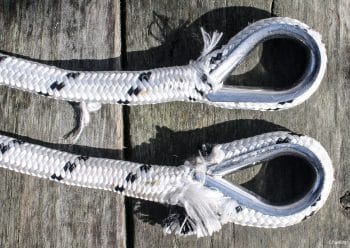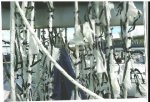stav
Member
Hi, happy new year! Used to be here quite a lot but haven't forvrious middle ge man reasons but it I get to be posting a question! I m having a go t making a drouge as below.
Series Drogue
I have nearly made the 20 cones and went to add them to the 200' feet of secondhand 18mm brid on braid. However I would like to add a hard eye at each end. I have tried cleaning the rope, soakinh4i hot water etc but I don't think I can splice it. So was after suggestions for knots o make an eye then whip in place a stainless steel thimble. Hope that makes sense?
Any suggestion for good knots etc to make the eye. No 8ntention of undoing them and could addsome stitching?
Thanks for any ideas?
Series Drogue
I have nearly made the 20 cones and went to add them to the 200' feet of secondhand 18mm brid on braid. However I would like to add a hard eye at each end. I have tried cleaning the rope, soakinh4i hot water etc but I don't think I can splice it. So was after suggestions for knots o make an eye then whip in place a stainless steel thimble. Hope that makes sense?
Any suggestion for good knots etc to make the eye. No 8ntention of undoing them and could addsome stitching?
Thanks for any ideas?


